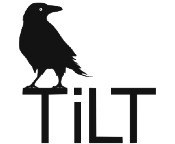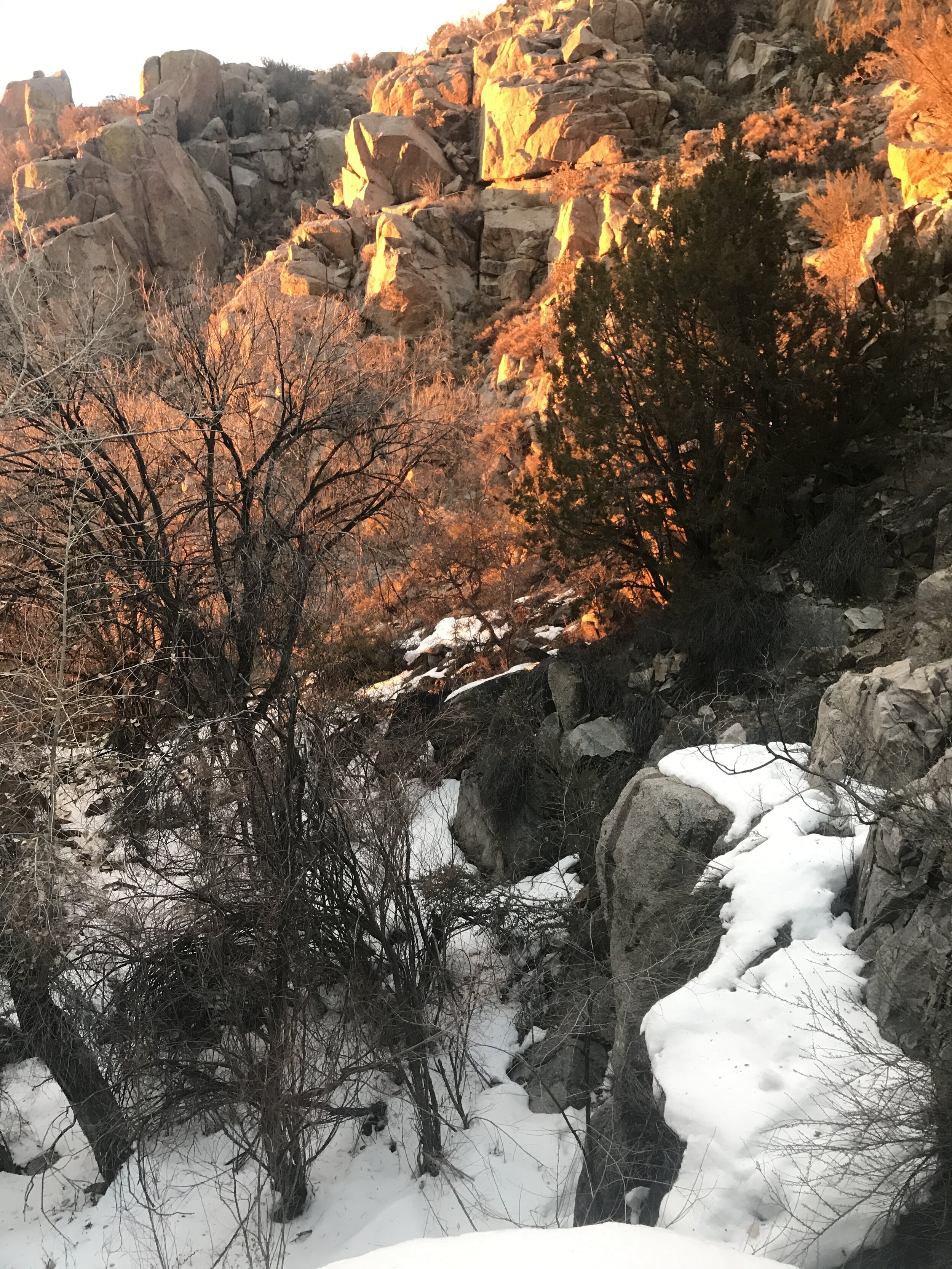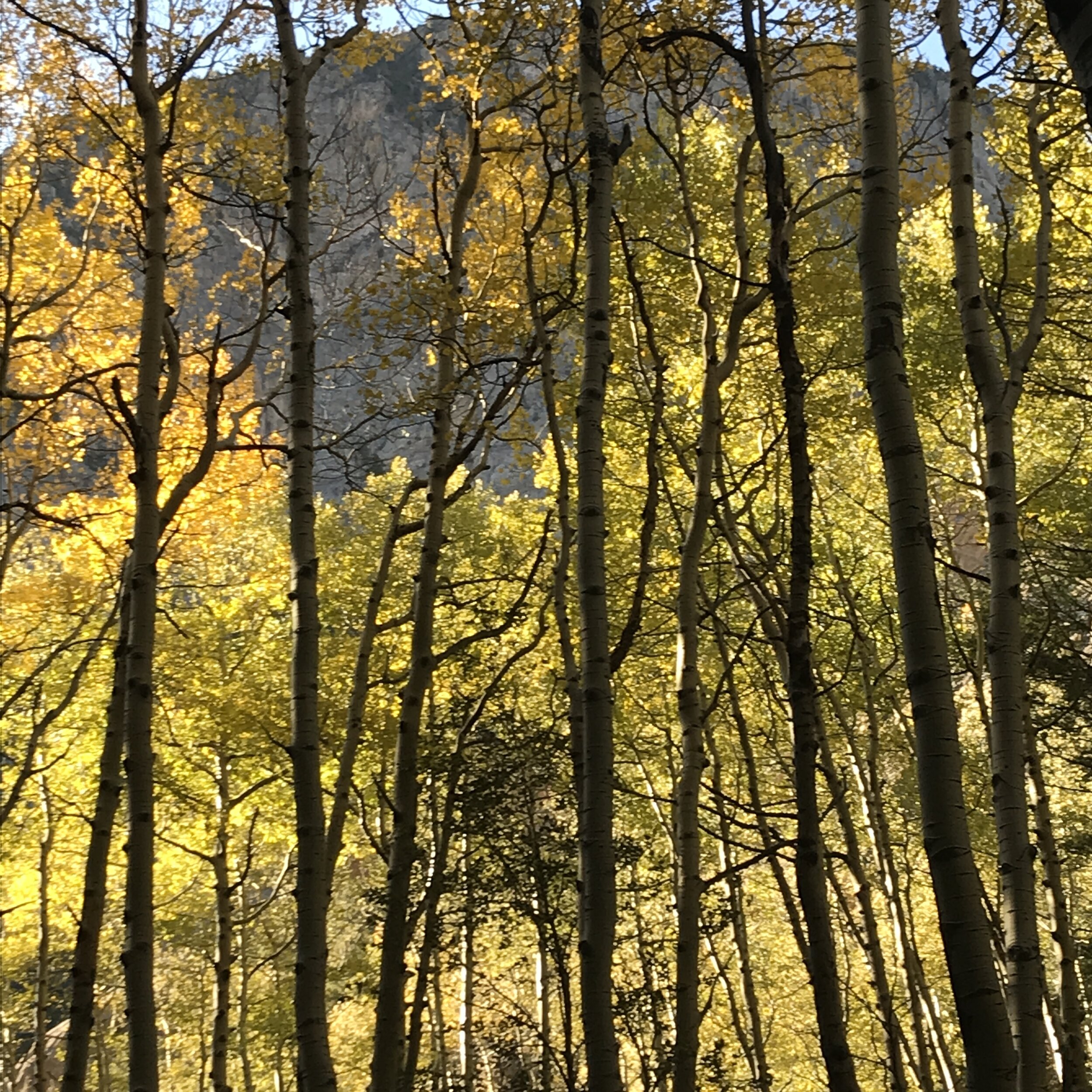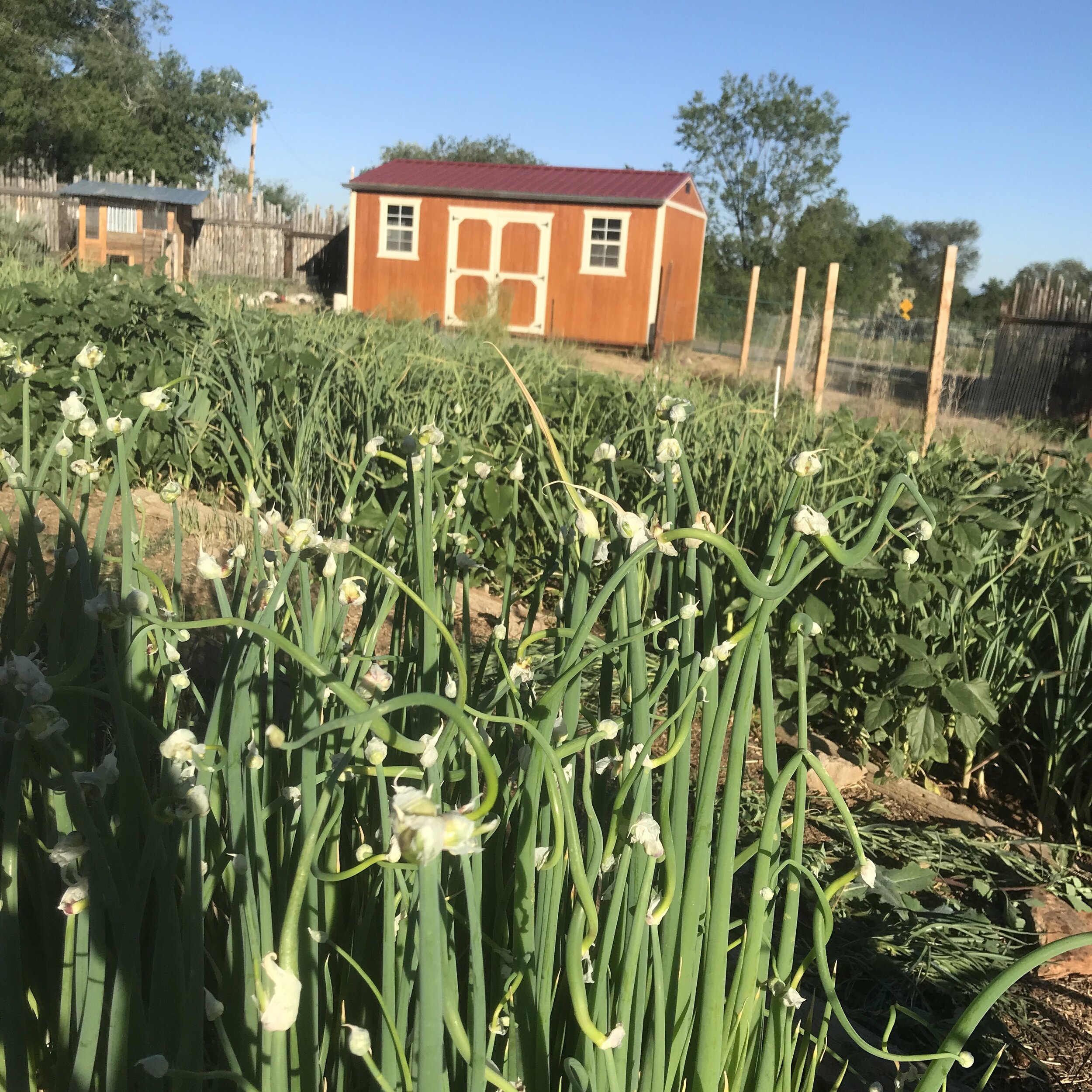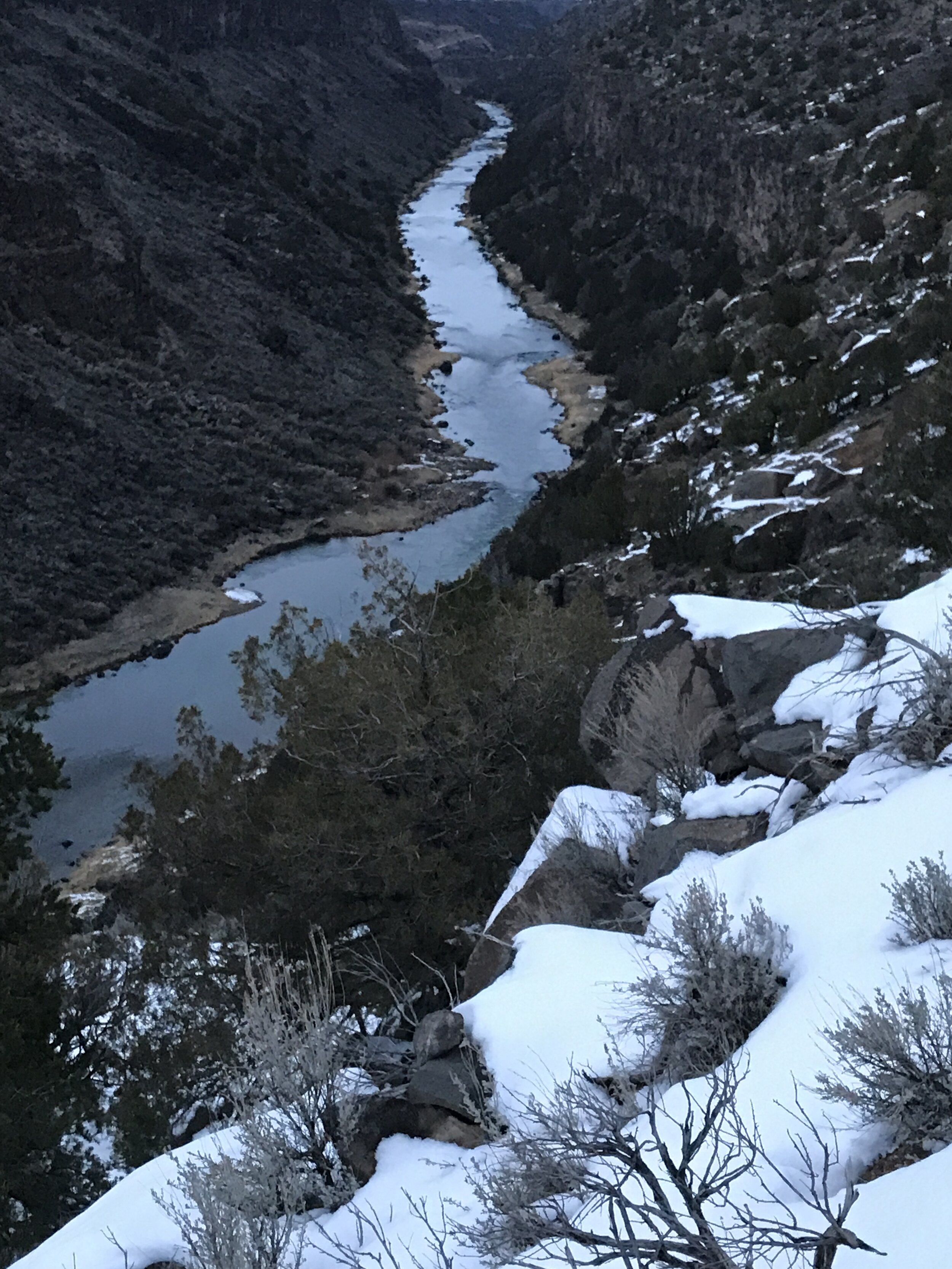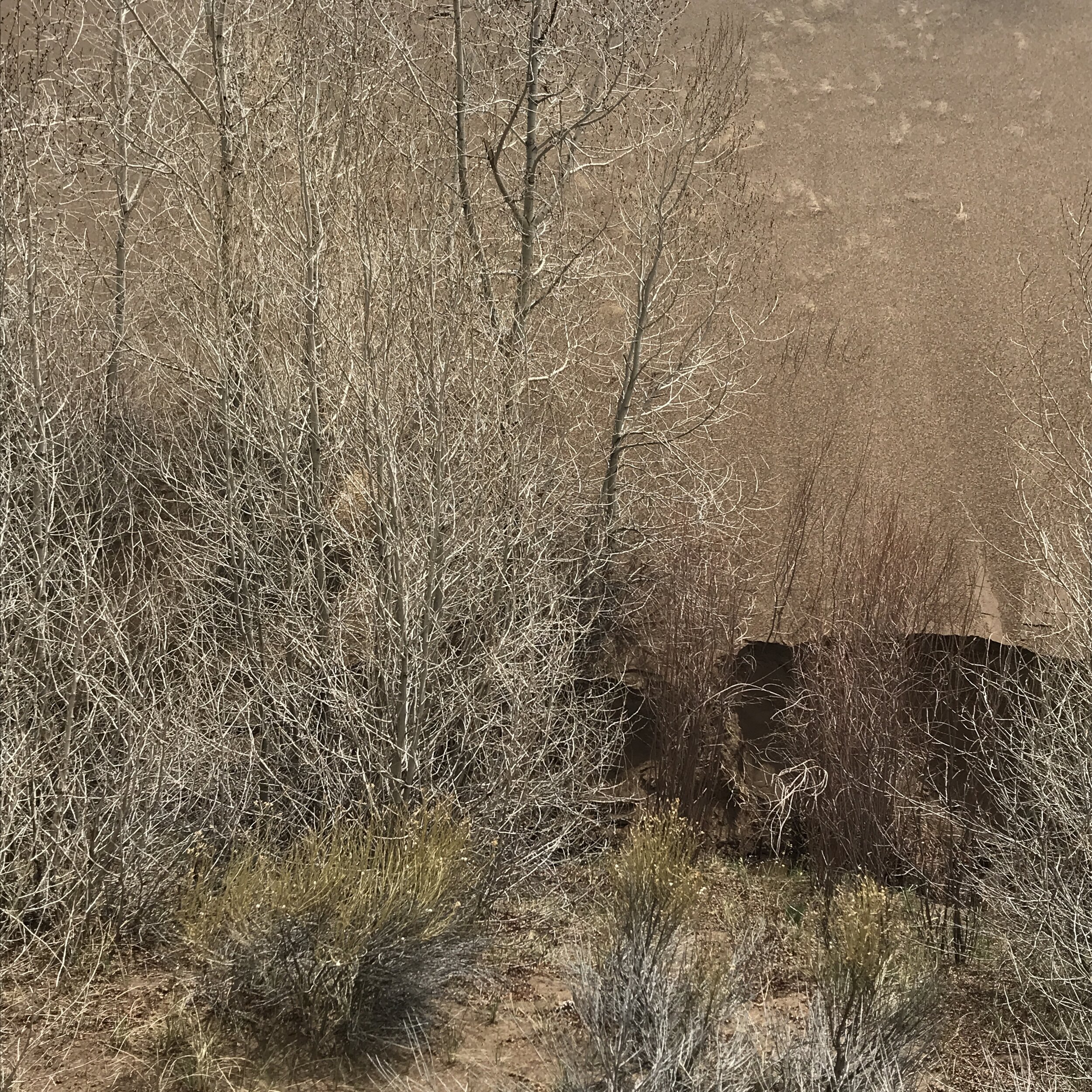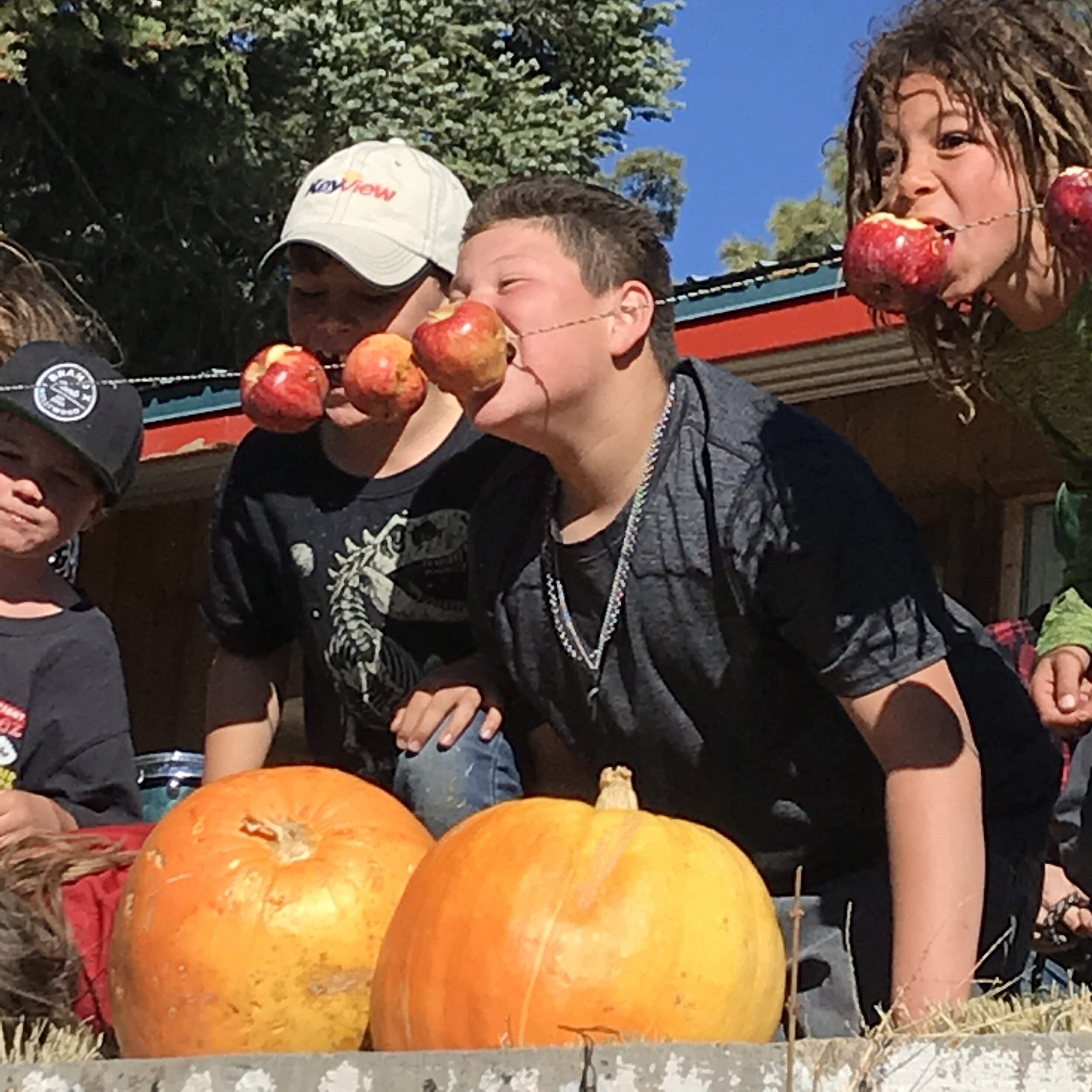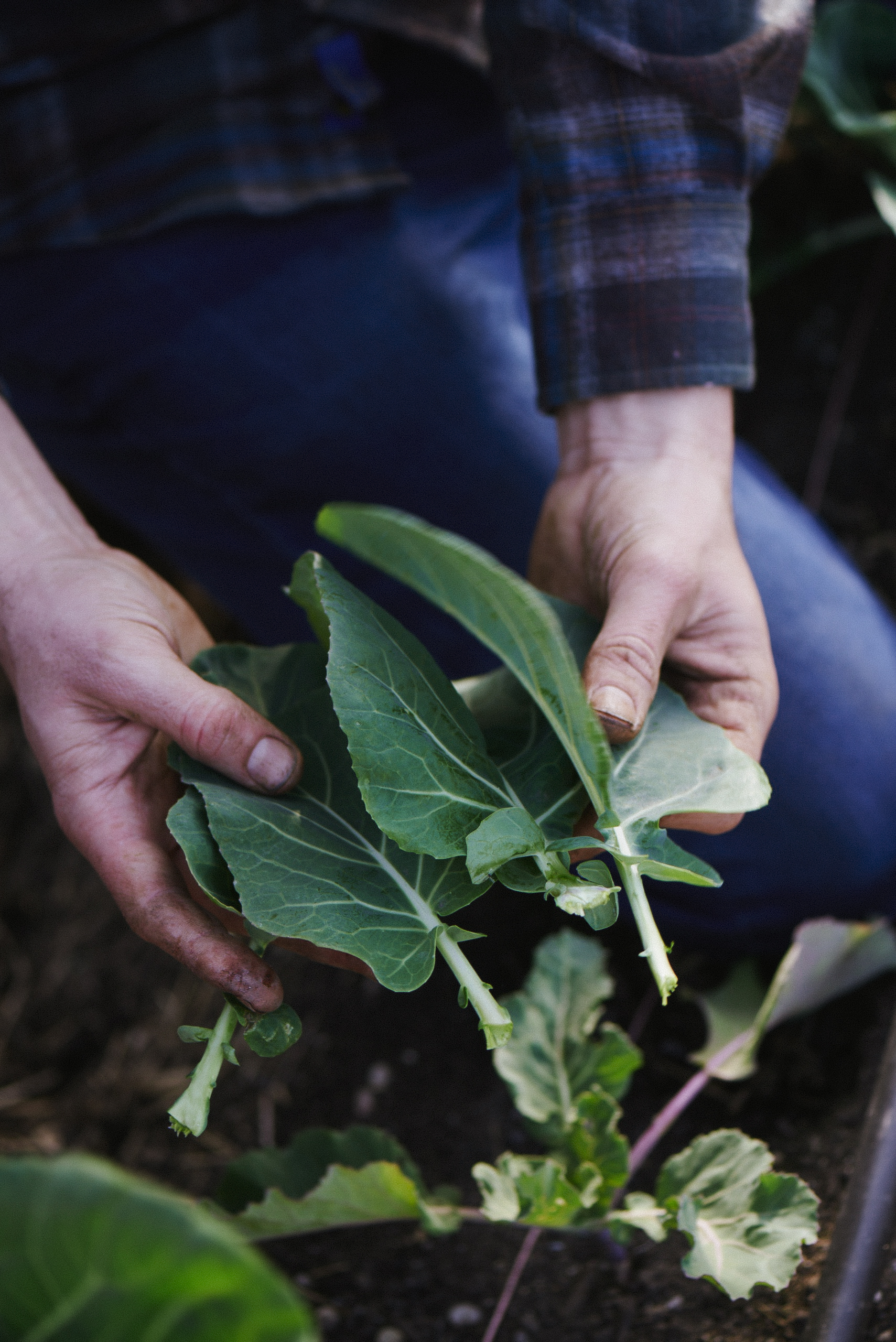Seasonal Living: Fall Into Place
―
What might a calendar year look like, for those who walk the Watershed Way?
Here are some field notes from a few of us who’ve been living into it for a few years now in Taos. We are finding that as we learn how to live well with the land and beings and seasons of Taos—this region we call home— our lives literally “fall into place.” Not only do our lives start to make more sense, but we adapt to, work with, and celebrate the different gifts and activities that each season of life brings. Our calendars have changed a lot. Sometimes we follow natural seasons—like the end of the harvest, the deepening of winter, and the onset of spring. At other times we follow cultural seasons—like the start of a new school year, a festival at Taos Pueblo, or the observation of a Sunday sabbath.
We are learning that life and its seasons is an ongoing cyclical ceremony, an ever-changing participatory gift from Creator, a Great Turning that we want to be part of. Instead of being run by the arbitrary, contrived and never-ending demands of industrial civilization, we seek to fall into the rhythms of the sacred world around us. We want to rediscover living in concert with the changes of the season; we want to trust that, indeed, there is a season for all things under heaven.
We are not satisfied with the hyper-mobile, always-open, never-resting, all-consuming, ecocidal, ultra-frenzied pitch of modern life. We want to live closer to the earth, closer to natural rhythms, and perhaps closer to the way Creator intended. We draw inspiration from four deep streams: 1) the ancient indigenous Pueblo cultures in our area; the land-based Hispanic agricultural traditions we are surrounded by in northern New Mexico; and the eco-centric perspectives of both ancient Judaism and Celtic Christianity. We seek a life way that grounds us smack-dab in the center of our watersheds in the midst of a dis-located and dis-placed dominant culture.
To the Celts, time was cyclical rather than linear. So too with Pueblos of New Mexico. When we sink in to cyclical time, we mark transitions by ritual and festival, and attune and adapt our lives to seasonal changes. Journeying through a year with events and rituals to mark transitional times is, well, natural. For millennia, humans located in specific places consciously engaged with the energies present in each season. It is only in very recent times have humans decided to dislocate themselves from specific places and natural rhythms, allowing an overdeveloped subsection of our species to become masters of nature yet leaving us perilously adrift, displaced and disconnected.
A season-based, place-based calendar has both a cosmic and personal dimension. It enables us to live with more awareness and understanding of ourselves, our immediate surroundings, our larger watershed, our changing planet, and the seasonal internal rhythms of our lives. We live into the understanding that each season has specific qualities, energies and rhythms; each bring gifts and challenges into our lives. We learn that no season is better than another but that all are part of the great dance.
To live this way—to experience life this way—becomes what the Celts call an Imram—a spiritual journey. Do you want to undertake an Imram with us by joining the Watershed Way, and taking seriously the idea of living into the seasons for a calendar year? All it will mean is a transformation of your life and your community. We won’t do it well, and we won’t do it consistently, but we will do it joyfully, and perhaps we will learn something along the way, and live into a kind of lifeway that modern dis-located people urgently need to practice to become re-placed once again.
Rhythms of a Year
Much of the words below come from the Celtic-inspired writings of Caitlin Matthews and Delores Whelan. Feel free to adapt this document for use by your own regional group—but I’d like to know if you do! —toddwynward@gmail.com
Samhain: The Winter Quarter [Nov - Jan]
Overview: The Celtic year begins at Samhain. Darkness and night dominate the northern hemisphere and nature sleeps. Hallow E’en represents the gateway into the dark half of the year. As the cold weather closes in, the focus shifts to the inner journey: the soul’s journey through darkness, from where new life emerges. Here we let go of outer activity, bring the focus inwards to embrace a process of growth that is slow and unforced.
The Winter quarter of Samhain bring the gifts of reflection, restoration and renewal. It is traditionally associated with remembering the ancestors, with the coming of death and the conception of new life. In the human growth cycle, Samhain corresponds to the period of old age when wisdom, freedom of spirit and clarity are experienced. Samhain is a time to remember the dead, to celebrate the lives of wise elders, all those whose actions and ideas have brought resolution and peace, all holy ones whose sacrifices have brought new life and opened spiritual thresholds to all.
Activities:
Practice introspection, meditation, contemplation, drawing upon the peaceful sanctuary of the season
Plan deeply —draw up your will; invest; envision multi-year strategic plans
Be in rich relation with those you trust
Dream in the dark; sense what is emerging; discern how creation is calling you
Act to protect and preserve wisdom & rights of indigenous, especially locally
Seasonal Rhythms and Events We Do During Samhain:
During the first portion of Samhain, from November to Dec 15, those of the Watershed Way turn their task focus from outdoors to indoor. Site improvements turn from exterior to interior. Food efforts move from growing and harvesting to processing—shucking, threshing, canning, drying, freezing, storing.
During the middle of Samhain, we devote time to feasting and celebrating, being with family and friends, honoring our deep connections, as exemplified by Thanksgiving Week and Winter holidays.
Toward the end of Samhain, we reserve the month of January to be a time of re-collecting, re-connecting, and re-membering. We encourage reconnecting with old friends through visits and letter writing; we take time to assemble this year’s photo books, and compose year-end letters for our friends and funders. We create art, match with favorite poems and quotes, and display the words & actions of our saints and mentors on our walls. Fallow time. Dream time.
Thanksgiving Before Thanksgiving Feast; Thanksgiving Break
Advent season—Where is the Christ being birthed into the world today? How, like Mary, do we wait?
December 21 Winter Solstice; Dec 24 Christmas Eve at Taos Pueblo
Jan 1-5 a week for personal Year-End Reflections, letter writing, re-collecting, photo book making
Conduct a “Year in Review” Annual Self-Assessment
Collective Visioning: What Might We Dream Into Being this Upcoming Year?
Imbolc: The Spring Quarter [Feb - April]
Overview: Imbolc, also known as the Feast of Brigid, is February 1. It celebrates the arrival of longer, warmer days and the early signs of spring. The word Imbolc means literally "in the belly" in the old Irish Neolithic language, referring to the pregnancy of ewes. The Spring quarter of Imbolc brings the gift of insight and inspiration. It is a time of beginnings and of essential truthfulness. Begun in the dark days of early Spring, it is traditionally the time to bring back the light, to appreciate innocence, truth and justice, to make resolutions and plans and to prepare for the enfolding year. In the human growth cycle, it corresponds to the period of childhood, when all things are questioned for their own sake. Imbolc is a time to celebrate the lives of all those who have taught and prepared us, all who have been upholders of justice and truth, all holy ones who have brought great questions, clarity and insight.
Activities:
Practice skills and crafts with dedication, drawing upon the inspiration of your heart.
Clarify your life by spring cleaning, both your surroundings and your lifeways. Reassess your aims and objectives in life. Bring into focus your plans for the upcoming year.
Create a shrine to focus your spiritual and social intentions
Indoors, begin to plant the seeds of flowers and vegetables that take a longer time to emerge.
Walk and meditate outside for at least 15 minutes daily.
Be active with others in defending human rights, in places where injustice prevails.
At the Taos Initiative for Life Together [TiLT], the first part of Imbolc is our season to plan, from Candlemass to Spring Equinox [Feb 2-Mar 21]
Our agricultural ambitions: our physical farm layout, our timeline and supplies and budgets and infrastructure; confirming any new partnerships w landowners
Our landscaping & construction ambitions: dreaming up projects, drawing architectural plans, defining budgets delegating responsibilities, defining timelines and deliverables
Our program ambitions: laying out our event calendar from April - October
Our residential ambitions: who do we want to live where? How many in the house, and for how long? Review/ revise our resident norms, practices and expectations, values. Prepare for summer residents.
Our political and social ambitions: clarify our intentions for the upcoming year. What kind of community engagement? What might we initiate? What might we join? What religious, civic, or cultural alliances will we foster? What neighborhood, town, region, state, and national affiliations will we plug into?
Seasonal Rhythms and Events We Do During Imbolc:
Early Feb: Witness for the People @ Santa Fe Roundhouse
Early Feb: Watershed Way Retreat: “Courage in the Heart of Winter / How is Creation Calling You?” Candlemass, Seed Planting, & Winter Watershed Pilgrimage
Mar 21, Spring Equinox [Paku Raimi in Ecuador] Indoor seed planting, Spring Watershed Pilgrimage
April: Earth Day activities / Climate Justice Week nationwide
Observe Lent as 12-step approach to examine some of our consumer and systemic addictions
Easter Wilderness Solo: Like Jesus in the desert, what in you needs to die so Spirit might be born?
Easter Celebration / Sunrise at the Gorge
Beltane: The Summer Quarter [May - July]
“In Spring there’s hope; in Fall the exquisite, necessary diminishing; in winter I am as sleepy as any beast in its leafy cave; but in Summer there is everywhere the luminous sprawl of gifts…” —Mary Oliver
Overview: May-time marks Beltane, and is associated with brightness, fire, sun and summer. The Eve of Beltane represents the gateway into the bright half of the year. At Beltane we mark the transition from winter to summer, from the dark to the bright half of the year. The summer quarter of Beltane brings increased confidence and is a time of growth and greater sociability as the weather grows fine and hot. It is traditionally the time for celebrating the essential eros of the year, the vitality of Summer and the joys of youth. In the human growth cycle it corresponds to the period of young adulthood when the blood is hot, when ideas are sometimes impetuous, and ambitions requiring courage and energy are pursued with vigor. Beltane is a good time to celebrate the lives of all heroes and heroines, all protectors of the land, all who have brought innovative and resourceful means of help, all holy ones whose great love in action complements their spiritual practice with human grace.
Activities:
Practice your physical skills, drawing on the vitality of the season
Regularly assess your motivations, and your best use of the amazing gift of life you have been given
Plant and tend your garden, to have waves of abundant harvest in later Summer and Autumn
Exist and meditate outdoors for at least a half hour daily
Be active with like-minded allies to support environmental justice, locally and globally
Hold “Labor on the Land" days, inviting the larger Taos community to days of ora/labora/sapora
Identify flowers and animals in our locality, learn about them, and add them to our Localmanac
Greet the sun outside everyday
Practice a tech-free work-free Sabbath one day a week, preferably sleeping outside
Open doors to seasonal farm volunteers; implement significant projects
Seasonal Rhythms and Events During Beltane:
May 3 -- Foot Races for the Sun, Taos Pueblo
May 15 -- San Ysidro Day, recovenanting ceremony for the Watershed Way
May 15-June 1 Crucial window of vegetable planting outside
June 21 Summer Solstice / Summer Watershed Pilgrimage
Mid July -- Garlic Harvest, First Greens & Squash emerge
Lughnasadh: The Fall Quarter [Aug - Oct]
Overview: The festival of Lughnasadh marks the harvest of the year’s journey and work, which began in the darkness of Samhain. It celebrates the culmination of the forces, which interacted to ensure a successful harvest in both the land and our own lives. The Autumn quarter of Lughnasadh brings the gift of maturity, and is a time of physical and spiritual harvest. It sees the greatest change in weather, from broiling heat to dark and chilly nights. It is the time for celebrating the harvest and making preparations for Winter. In the human growth cycle, Lughnasadh corresponds to the period of mature adulthood, when healthy steadiness and responsibility have been established. It is a time to assess both your purpose and presence. It is a time to celebrate the lives of “shade trees”—all those who have helped stabilize and uphold noble values and life-giving systems; all those who have exercised good judgement and good stewardship; all those who have worked for the commonwealth; all those who have steered the doubtful and anxious into the harbor of peace; all holy guardians who have saved us from life-disabling mistakes.
Activities:
Practice your knowledge, learn new subjects, connect new information to your existing store of wisdom.
Assess your own life’s harvest. Clear areas of overgrowth. Prepare for reseeding.
Remember your own descendants; prepare your spiritual, emotional, and physical legacy for them.
Bring concord between yourself and others; make peace between paradoxical parts of yourself.
Harvest fruits & vegetables with gratitude; Prepare gardens for winter; Process and store up food
Be active with others to bring healing and integration to those broken and in distress
Walk and meditate outside at least 30 minutes
Identify plants and trees by their Autumn color, find out about their qualities, add them to Localmanac
Greet the sun outside every day
Practice a tech-free work-free Sabbath one day a week, preferably sleeping outside
Wilderness Pilgrimage— Backpacking
Reskilling meetups, camps—competitions and celebrations of skill
Seasonal Rhythms and Events During Lughnasadh:
Aug 2 -- Lammas [Loaf Mass] and Celebration of First Fruits
Back to School; Outdoor Leadership Training, Educator Orientation
The Wild Hunt: Mushroom Hunting, Pinon gathering, Green Chile Roasting; Firewood Gathering
Sept 4 -- St. Francis Day; Sept 8 -- San Luis Valley Potato Festival; Matanzas
Sept 21 Fall Equinox / Fall Watershed Pilgrimage
September/mid-October: Grape, Plum, Apple Harvests; Hunting Season. Processing: steaming, dehydrating, juicing, pressing, canning, freezing. Order seed potatoes, Make Fall meat order.
Oct 6 -- First light freeze that often kills basil, tomato plants, squash leaves
Oct 9 -- Festival of Ingathering / Festival of Booths [Shavuot]— Camp in the fields, Bring in the harvest
Oct 10 -- Indigenous Peoples Day; Oct 15 -- World Food & Climate Day; Oct 21: Harvest Festival in Lama
Late-October: Add Fall soil amendments. Till if needed. Plant garlic. Winter cover crops go into ground.
Oct 28-Nov 2: All Hallows Eve / All Saints & All Souls / Eve of Lughnasadh / Day of the Dead
- - - -
The Taos Watershed Way chapter welcomes interested folks to participate in change-of-the-season ceremonies we hold—once a quarter during the first week of August, November, February, and May. Committed members of the Taos Watershed Way re-covenant each May around San Ysidro Day. Interested? Contact toddwynward@gmail.com
